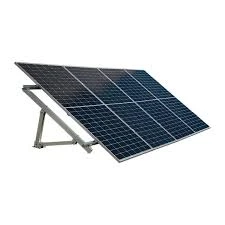Exploring the Benefits and Features of Solar Inverters for Sustainable Energy Solutions
The Advancements and Benefits of Solar Inverters
In the age of renewable energy, solar power has emerged as one of the most viable and sustainable sources of electricity. One of the key components in any solar energy system is the solar inverter. This vital device plays a crucial role in converting solar energy into usable electricity for homes and businesses. As we explore the advancements and benefits of solar inverters, it's essential to understand their functions and the impact they have on the efficiency of solar photovoltaic (PV) systems.
At its core, the solar inverter converts direct current (DC) produced by solar panels into alternating current (AC), which is the form of electricity used by most household appliances and the grid. There are several types of solar inverters available, each offering unique features and benefits. The three primary categories include string inverters, microinverters, and power optimizers.
The Advancements and Benefits of Solar Inverters
On the other hand, microinverters are installed on each individual solar panel, allowing for independent operation. This can significantly enhance the overall efficiency of a solar system, especially in scenarios where panels experience varying degrees of sunlight due to shading or orientation. By optimizing the output of each panel, microinverters can maximize energy production and, consequently, savings on electricity bills. The downside, however, is that microinverters generally come with a higher upfront cost compared to string inverters.
string solar inverter

Power optimizers provide a middle-ground solution, functioning similarly to microinverters but with a different approach. These devices are installed at the panel level and enhance the energy output from each panel without converting DC to AC at the site of the panel. Instead, they send the optimized DC to a central string inverter. This combination provides added efficiency and performance benefits while often being more cost-effective than a full microinverter system.
Beyond the types of inverters available, another significant advancement in solar inverter technology is the incorporation of smart features. Modern inverters can now connect to the internet, providing real-time monitoring of the solar system’s performance. Users can access data through apps on their smartphones or tablets, enabling them to track energy production, consumption, and system status from anywhere. This not only empowers users with information but also aids in timely maintenance and troubleshooting, ensuring long-term reliability and efficiency.
The environmental benefits of using solar inverters and solar power systems are profound. By harnessing the power of the sun, households and businesses can significantly reduce their carbon footprint and dependence on fossil fuels. Additionally, as solar technology advances and becomes more efficient, the cost of solar energy is decreasing, making it an increasingly attractive option for energy consumers worldwide.
In conclusion, solar inverters play a pivotal role in the solar energy ecosystem, transforming sunlight into usable electricity that can power our lives. With a variety of inverter options available and ongoing technological advancements improving efficiency and functionality, the future of solar energy looks bright. As more individuals and organizations turn to solar power to meet their energy needs, the demand for innovative and effective solar inverters will continue to rise, further contributing to a sustainable energy landscape.
-
Unlocking Energy Freedom with the Off Grid Solar InverterNewsJun.06,2025
-
Unlock More Solar Power with a High-Efficiency Bifacial Solar PanelNewsJun.06,2025
-
Power Your Future with High-Efficiency Monocrystalline Solar PanelsNewsJun.06,2025
-
Next-Gen Solar Power Starts with Micro Solar InvertersNewsJun.06,2025
-
Harnessing Peak Efficiency with the On Grid Solar InverterNewsJun.06,2025
-
Discover Unmatched Efficiency with the Latest String Solar InverterNewsJun.06,2025







